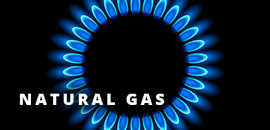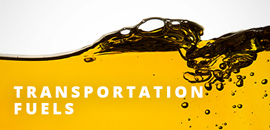PROGRESS REPORT
A. Capital Investments
New Construction
- These new facilities are designed and built in conformance with current energy codes and standards. The construction process is overseen and coordinated by a project management firm under the University of Texas (UT) System, which coordinates design review and owner-architect-contractor (OAC) meetings. Design review meeting between the design team and the owner's facilities construction, planning, and operations staff, IT/networking, health and safety, security, and the end user departments are a standard practice.
- Brownsville Center for Human Genetics (BCHGB): 17,149 GSF, notice to proceed October 2021; substantial completion Nov. 14, 2023.
- McAllen Cancer and Surgery Center: 143,670 GSF; design development began in May 2022; groundbreaking was Oct. 14, 2022; substantial completion for the Ambulatory Surgery Center (ASC) is Jan. 1, 2024-25 and for the rest of the building is March, 7, 2025.
- McAllen Practice Golf Facility (MGOLF): 4,000 GSF, notice to proceed on Dec. 07,2022; substantial completion Dec. 14, 2023.
- Edinburg Soccer and Track and Field Operations Facility: Soccer Building- 8,000 GSF, Track and Field- 5,700 GSF, notice to proceed on Oct. 10, 2022; substantial completion Dec. 27, 2023.
- EHPE1 Fieldhouse Gym Addition: 25,674 GSF, notice to proceed Feb. 08, 2023; substantial completion June, 5, 2025.
- Edinburg Vaquero Performance Center: 48,000 GSF; substantial completion is summer 2025.
- Edinburg Student Housing 146,912 GSF and Dining 30,388 GSF; expected substantial completion is fall 2026.
Major Renovations
- Major renovations conducted in fiscal year 2024: EHPE1 Practice Gym: 11,000 GSF; substantial completion July 9, 2024.
B. Conservation Initiatives
LED Lighting Conservation in Existing Buildings: This initiative involves upgrading existing building lighting (mostly classrooms) with LED technology. This is an ongoing strategy to replace T8 fluorescent tubes and electronic ballasts with lower wattage 4000-5000 Kelvin LED lamps. The purpose is to improve lighting quality and decrease energy usage and demand.
- Continued the trend of upgrading to LED lighting UTRGV-wide in fiscal year 2024. The scope involved mostly fluorescent tubes with electronic ballasts and a few incandescent, metal halide, and high-pressure sodium lamps.
Heating, Ventilation, Air Conditioning, and Controls Conservation Initiatives:
- A purchase order (PO) was issued in August 2023 to migrate all Siemens field panels UTRGV-wide from the unsupported Siemens Insight front-end software to Desigo CC software. Desigo CC is expected to improve building automation system reliability and performance along with the use of BACnet field panels. Expected completion is early 2025.
- A PO was issued to Siemens to upgrade the laboratory controls at ESCNE ABC Wings. Expected completion is early 2025.
- Replace five 1994 vintage rooftop air handling units at Edinburg Community Engagement and Student Success Building (ECESS); completed during summer 2024.
- Replace three air handling units at Edinburg Dining and Ballroom Complex (EDBCX); completed during summer 2024.
- The standard for end of service life and catastrophically failed motors is to replace them with premium, higher efficiency motors, ECM motors, or VFD's where feasible.
Holiday Energy Conservation Initiative:
- Campus Facilities Operations staff participated in energy conservation campaigns for fiscal year 2024 holidays including Thanksgiving, Christmas and Martin Luther King, Jr.
- University of Texas Rio Grande Valley (UTRGV) classroom and event scheduling software was utilized to develop air conditioning schedules to conserve energy.
- Cooling plant operations staff scheduled BAS-controlled equipment to turn off or operate in unoccupied mode. Trades crews reset temperature setpoints for stand-alone HVAC units in Edinburg. They also turned off non-critical exhaust fans and water heaters.
Water Conservation Initiatives:
- At the UTRGV cooling towers, continue to minimize sewer blowdown and maximize cycles of concentration by utilizing pH control. The blowdown savings are approximately 15 percent.
- New construction allows the campus to add to the existing irrigation controller infrastructure.
- In Brownsville, master valves are controlled via smart phone, tablet and desktop. The system monitors the flow of water in case of leaks or broken lines and sends visual and audible alarms to the computer or via text message.
C. Operations and Maintenance Initiatives
Scheduling Building Air Conditioning: Cooling plant operations staff implements, monitors, and maintains building heating, ventilation, and air conditioning (A/C) schedules which they enter in the Insight, Metasys, and Desigo building automation system software. The operations staff develops A/C schedules by referencing classroom and event scheduled data found in the UTRGV classroom and event scheduling software. The UTRGV scheduling software displays its events according to building, room number, date, event name, start time, and duration.
Preventive Maintenance Program: UTRGV expanded its use of The Maintenance Authority (TMA), a web-based computerized maintenance management software a few years ago. Through time-tracking of physical plant staff by means of work orders, has led to the development of customized dashboards and reports. By defining and documenting work order activity, administrators are managing the work order process, closing PM and service call work orders in a timely manner, gauging employee performance, and determining when productivity improvements and/or additional resources are necessary.
Operating Sequences Utilizing Building Automation System (BAS):
Unoccupied Mode: Involves utilizing the building automation system to schedule or modify HVAC equipment operation to save energy in building spaces during unoccupied periods such as after-hours, weekends, between semesters, and holidays.Savings are obtained by increasing building indoor cooling temperature set points and/or decreasing heating set points which ramps or throttles down VFDs, valves, and dampers in chillers, pumps, air handlers, and terminal equipment.
The space temperature set points are 74-70, which are the standard university wide. This process involves continuous monitoring of VAV boxes and space temperatures, identifying boxes with heaters on, and adjusting if necessary to turn heaters off while maintaining satisfactory space temperatures. Resetting temperature setpoints down to 72-68 allows boxes at minimum occupied flow to further minimize heater on-time and thereby save energy.
Edinburg continued to participate in a utility-sponsored demand response program whereby cooling plant operators shed 800 kW by utilizing the BAS to remotely control the thermal storage tank's operation to offset the chiller load.
By shedding electrical load, demand response program members keep the ERCOT power grid from overloading which helps avoid rolling blackouts in Texas.
Campus Facilities Operations staff in Edinburg has been participating in demand response for twelve years and have earned over $450,000 for the university.
- Turning off all Edinburg cooling plant chillers during low outside air temperature periods while continuing to circulate chilled water in the loops. This initiative is based on chilled water return temperature, generally 45ºF to turn off the chillers and restart them above 52ºF.
- Fiscal year 2024 was the third year that energy/utility management software is used as a repository of utility invoice/inhouse data, report generation, data analysis, and dashboard development.
- Ongoing Annual Chiller Tube Cleaning for Water Cooled Chillers, Air Handler Coil Cleaning, and Chiller Eddy Current Testing Programs: In fiscal year 2024, completed chiller tube cleaning at the cooling plants in Brownsville, Harlingen and Edinburg.
- In fiscal year 2024, re-hired a retired UTRGV lead cooling plant operator part time to help maintain and improve the BAS front-end.
Fleet Vehicle Management Program
- In fiscal year 2024, the UTRGV 229-vehicle fleet purchased 46,636 gallons of diesel at an average rate of $3.85/gallon and 99,933 gallons of unleaded gasoline at an average rate of $3.01/gallon.
- When compared to the 232-vehicle fleet of fiscal year 2023, in fiscal year 2024 purchased diesel increased by 11,629 gallons and gasoline usage decreased by 8,679 gallons.
- In fiscal year 2023, diesel had an average rate of $4.06 while gasoline had an average rate of $3.06
- In fiscal year 2024, UTRGV purchased 12 vehicles (4 diesel buses, 1 Ford Ranger, 4 Ford Explorer (unleaded) and 3 transit vans).
GOALS
Fiscal year 2024 is the third year out of ten years since the benchmark year was established.
| Utility | Target Year | Benchmark Year | Percentage Goal |
|---|---|---|---|
| Water | 2031 | 2021 | 5 |
| Electricity | 2031 | 2020 | 5 |
| Transportation Fuels | 2031 | 2021 | 5 |
| Natural Gas | 2031 | 2021 | 5 |
STRATEGY FOR ACHIEVING GOALS
Capital Investments
- New Construction: To meet the latest utility goals, continue to implement code compliant best practices strategies in the design, construction, and commissioning of new high performance buildings which will optimize utility cost and consumption through product specification while maximizing process efficiency and building occupant comfort and equipment reliability.
- Major Renovations: To meet the latest utility goals in terms of energy and water management, continue updating the capital improvement plan for existing facilities by applying energy and water conservation strategies which ascribe to quality-driven, code-compliant, best practices approach in the planning, design, construction, and commissioning phases of major renovations. The scope of major renovations impacting energy and water usually involves replacing outdated equipment/ systems with higher efficiency upgrades in lighting, mechanical and controls, roofing, and the building envelope. The following are typical strategic components within the scope of major renovations:
- LED Lighting Technology is the standard for buildings and parking lots in lieu of HPS, incandescent, fluorescent and metal halide.
- Mechanical and Controls: To procure water and air cooled chillers with higher part-load efficiencies, air handlers and chilled water pumps with VFD's or ECM motors, condensing in lieu of non-condensing boilers, premium efficiency motors, load-following controls, etc.
- Continue to update and implement the Roofing Maintenance Program for all existing UTRGV facilities.
Conservation Initiatives
UTRGV will continue to upgrade existing building energy and water consuming infrastructures, seeking higher efficiency products and processes to help us reach our utility goals.
- Relocate 1,400 ton chiller from Edinburg to Brownsville; purchase 2,000 ton chiller for ECULP;
- Migrate BAS panels from Siemens Insight to Desigo CC UTRGV-wide;
- Upgrade the laboratory controls at ESCNE B-Wing;
- Upgrade the air handlers (AHU's) at ECOBE; and
- Continue with the Holiday Energy Conservation Initiative.
Senior administration mass emails a memo with energy-saving instructions for the UTRGV campus community and request their participation. This campaign is to include the following initiatives:
Energy management staff prepare holiday A/C schedules with input from cooling plant operations, space management, and health and safety staff.
Cooling plant operations staff to input the A/C schedules in the BAS and monitor them during implementation. HVAC equipment to run in unoccupied mode. The Information Technology (IT) staff utilize software that remotely sets computers to hibernate or sleep mode. Students, faculty and staff conserve energy by making sure to unplug, disconnect, or turn off energy-consuming devices/lighting, and if applicable, setting their air conditioning to unoccupied mode prior to them leaving for the holiday.
- Continue to update and implement the Water Management Program, which consists of strategies to optimize the consumption of domestic water, irrigation water and cooling process water system management.
- Domestic Water Management: Remove low water efficiency appliances and replace them with high efficiency toilets, urinals, and faucets as funding becomes available or as they fail.
- Irrigation System Management: Edinburg irrigation emphasizing early leak detection, and fast-repairs, also cross-train groundskeepers to help with minor irrigation repairs. The heart of an irrigation system is the water sprinkler controller. The Edinburg campus has 69 electronic controllers, and Harlingen has three of them. The Brownsville campus has 11 web-based irrigation system controllers. Investments in web-based, programmable devices like the Rainbird IQ controller are expected to improve staff productivity and conserve water.
Other related technology investments include master valves, flow rate sensors, and rain sensors. The former signals the controller to turn off either an isolated valve or the main valve if and when a preset max flow is exceeded. The latter will override the system when the moisture level exceeds a certain set point.
- In fiscal year 2024, a new full-time position was filled for a dedicated grounds maintenance manager. This person oversees the irrigation management program UTRGV-wide.
- Cooling Process Water Management: In addition to the existing chemical cooling process water treatment programs, the filtration of cooling process water will benefit the piping and equipment infrastructure and conserve water. For example, a Spirotherm side-stream filter is serving the chilled water system in the Brownsville central plant and a full-size unit in Luis Colom.
- Investigate design concepts and options to improve chilled water and condenser water filtration in the UTRGV campus in Edinburg. To help us reach our utility goals, a well designed process water filtration system can conserve water and save energy by improving heat transfer in mechanical equipment.
The Brownsville campus air handler condensate recovery system (AHCRS) is tied to the Main, Library, and Sabal buildings. It was expanded with the Brownsville Music, Science and Learning Center (BMSLC) and the Interdisciplinary Academic Building (BINAB), although the BINAB was left partially completed. The AHCRS is the primary make-up water for the cooling towers and domestic water is secondary. The AHCRS, which is piped to the cooling tower basins, conserves water year-round and cuts back on water treatment chemicals.
Operations and Maintenance Initiatives
- Scheduling Air Conditioning: Continue to maintain, implement, and monitor BAS-based air conditioning schedules. Capitalize on opportunities to conserve energy and water, for example, by resetting temperatures/pressures and cutting back on chilled water and air flow during periods when classes are not in session and office-hours are reduced as between semesters and during campus closure periods.
- Continue to evaluate the Preventive Maintenance Program to improve its effectiveness and thereby help reach our utility goals. Review and update PM scope of work and scheduling. Review and modify the PM roles and organization. Continue to add HVAC equipment lists in TMA for maintenance purposes.
Continue to develop and implement BAS sequences of operation which decrease utility consumption to help us reach our utility goals.
Turning off all Edinburg cooling plant chillers during low outside air temperature periods while continuing to circulate chilled water in the loops. We plan to investigate expanding this initiative to include VAV operation in campus buildings. During these periods, the actuators in VAV's may be commanded to minimize the air flow thus cutting back on energy and water use.
- Manage utility/energy management software for university-wide application to help us reach our utility goals.
- Continue with the annual chiller tube cleaning for water cooled chillers and air handler coil cleaning programs.
- The central utility plant will not adjust temperature set points for individual requests. Any requests outside of essential research or IT server rooms require prior approval by room supervisor.
- Empower Edinburg cooling plant operators who work three shifts per day, year-round to monitor and control Harlingen and Brownsville facilities after-hours and weekends.
- Prototype, then develop a network of Smart Water Meters (SWM) for water leak detection, remote notification, and measuring water consumption. Partner with local municipalities who have installed SWM's on UTRGV properties.
Continue to Improve the Fleet Vehicle Management Program
Fuel-Saving Strategy:
- Replace high mileage vehicles with new, higher efficiency units.
- Proactively schedule vehicle maintenance to improve miles per gallon.
- A bike trail project is in progress that is adding a route to allow utility vehicles around the campus in Edinburg; Brownsville bike/golf cart trail was created several years ago and is already in use.
- Strategic purchases: In fiscal year 2025, UTRGV plans to purchase three diesel buses, one Ford Ranger, and a hybrid is in the works.
Re-Benchmarking Study (To help identify and prioritize utility efficiency measures)
- For a second time, UTRGV elected to take advantage of the building energy performance benchmarking support provided on behalf of the SCORE® Program sponsored by AEP-TCC. This re-benchmarking study analyzed recent performance and compared it against the 2015 baseline study. The study includes 67 buildings in UTRGV properties served by AEP.
- Site energy data includes electricity and natural gas. The recent year of energy consumption data covers July 2022-June 2023, and the previous analysis covers March 2014-February 2015. Results were obtained on April 25, 2024.
- Overall, UTRGV is performing slightly below average compared to other college/universities in its climate zone, but currently consumes less energy per square foot and spends less budget dollars compared to the baseline model of the benchmarking study.
Retain Experienced Facilities Personnel
Those who make decisions that address utility efficiency measures, namely energy-and-water usage and cost are valuable to the organization. Strategies to retain them are as follows:
- Positive Working Environment;
- Education/Training Opportunities;
- Promote from Within;
- Competitive Salaries; and
- Comprehensive Benefits Package;
IMPLEMENTATION SCHEDULE
Implementation Schedule
The Implementation Schedule Section must outline a proposed timeline for implementing utility cost-reduction measures and a strategy for monitoring utility savings of the installed utility measures.
Proposed Timeline for Implementing Utility Cost-Reduction Measures
- Operations and Maintenance Initiatives: These are annual-recurring costs.
- Conservation Initiatives: Non-recurring costs that are incurred in less than or equal to one year.
- Operations and Maintenance Initiatives: These are annual-recurring costs.
Strategy for Monitoring Utility Savings of the Installed Utility Measures
- Monitoring consists of archiving utility invoice data, in-house kilowatt meter data, and
- Analyzing such historical utility data at the building level to calculate utility savings.
- At the enterprise level, annual EUTF Reports would be compared over the years to measure progress towards achieving utility usage and cost savings goals.
AGENCY FINANCE STRATEGY
Capital Investments
- New Construction
- McAllen Cancer and Surgery Center: Funded by permanent university funding (PUF), revenue financed bonds (RFS), and local plant funds (LPF), $148.5 million
- Edinburg Student Housing and Dining: RFS, $135.5 million
- EHPE1 Fieldhouse Gym Addition: RFS, $13.5 million
- Edinburg Vaquero Performance Center: RFS, $40.5 million
Conservation Initiatives
- UTRGV will continue to upgrade existing building energy and water consuming infrastructures to help us reach our utility goals as follows:
- ECULP Chiller Replacement: LERR funding, $1.1 million
- ECOBE HVAC Replacement: LERR funding, $1.1 million
- UTRGV-Wide Desigo CC Migration: RFS, $855,000
- HVAC Upgrades ESCNE: LERR, $400,000 Upgrade ABC Wing laboratory controls
Operations and Maintenance Initiatives
Miscellaneous projects from operating and deferred maintenance funding sources, $300k to $500k.
EMPLOYEE AWARENESS PLAN
A. Direct Methods to make employees aware of utility cost reduction measures include bi-weekly director meetings whereby instructions to implement direct
methods to reduce utility costs are subsequently disseminated to direct reports. The information may take the form of formal and informal training, signage,
and employee recognition programs. It may also include holiday energy conservation memos to the campus community and instructions for custodians
and other staff to turn off lights in hallways and offices after cleaning.
B. Indirect Methods to make employees aware of utility cost reduction measures include posters, meetings and through the grapevine.





